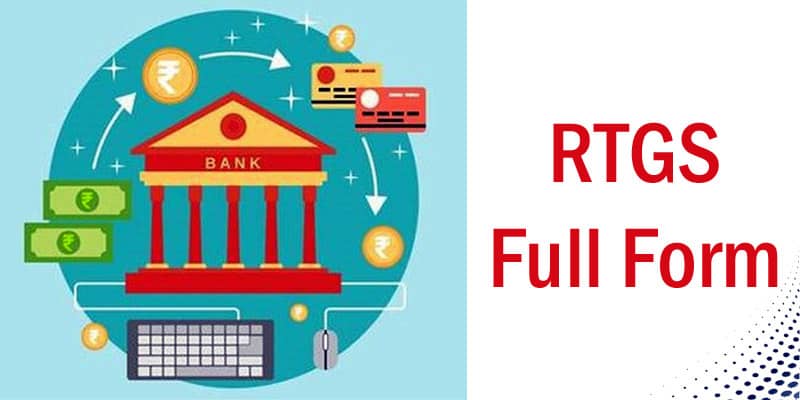RTGS Full Form
RTGS is an abbreviation for Real-Time Gross Settlement. It refers to the continuous and real-time settlement of individual order fund transfers (without netting). “Real-Time” refers to the processing of instructions as they are received; “Gross Settlement” refers to the individual settlement of funds transfer instructions. Because the fund settlement occurs in the books of the Reserve Bank of India, the payments are final and irrevocable.
Unlike NEFT, which is an electronic fund transfer system that processes transactions received up to a specific time in batches, RTGS is designed to process transactions continuously throughout the RTGS business hours.
Aside from the full form of RTGS, this article contains a summary of how RTGS is carried out, its benefits, and so on.
On a working day, the RTGS service window for customer transactions is open from 8 a.m. to 6 p.m. (earlier 8 am to 4:30 pm).
For all large-value interbank fund transfers, RTGS is used. The minimum amount that can be transferred via RTGS is Rs 200000/-.
RTGS Service Charges
There is no service charge levied by banks for inward RTGS transactions.
However, for outward transactions, the charges levied by banks for offering a transfer of funds are as follows:
- not exceeding Rs 30/-for transactions from Rs 200000/-to Rs 500000/-.
- not exceed Rs 55/-for transactions above Rs 500000/-.
However, at the recent Monetary Policy Meet, RBI Governor Shashikanta Das decided to do away with the charges levied on RTGS.
RTGS Process
The customer has to furnish the following information to a bank for initiating an RTGS remittance:
- Amount to be remitted
- The account number to be debited
- Name of the beneficiary bank and branch
- The IFSC Number of the receiving branch
- Name of the beneficiary customer
- Account number of the beneficiary customer
After supplying the details from the Transfers/Payments tab, RTGS should be selected as the transaction type. From the list of the beneficiary accounts, select the beneficiary, and enter the amount to be credited.
The IFSC number, an 11-digit alpha-numeric number, can be obtained by the customer from his/her bank branch, checkbook, or internet banking site.
In case of delay or non-credit to the beneficiary account, the complaint may be lodged via email or by post to the Chief General Manager of the Customer Education and Protection Department of RBI, giving the UTR number (Unique Transaction Reference) and details of the issue.
Benefits
- It is a safe and secure system for fund transfer.
- Transfers made through RTGS have no cap.
- This is a real-time transfer of funds to the beneficiary a/c.
- The remitter need not use a physical cheque or demand draft.
- The beneficiary does not need to visit the bank branch to deposit paper instruments.
- Money can be transferred from home/workplace using internet banking.
- It is backed by our legal system.
Points to be taken care of
-
- Cybersecurity threats exist in the case of online banking transactions, such as phishing (tricking people into revealing their information) and data theft.
- Processing RTGS transactions must be handled with extreme care. The account number of the beneficiary should be carefully verified, as, in the course of, the credit will be given to the customer’s account based on the account number provided in the RTGS remittance instruction/message.
Conclusion
When the term “real-time” is used, it means that the settlement occurs as soon as it is received. In other words, the transaction settles in the receiving bank as soon as it is transferred from the sending bank. The gross settlement means that transactions are handled and settled individually, rather than being bunched or grouped together. This serves as the foundation for a real-time gross settlement system. Because the fund settlement occurs on the books of the Reserve Bank of India, the payments are final and irrevocable.

